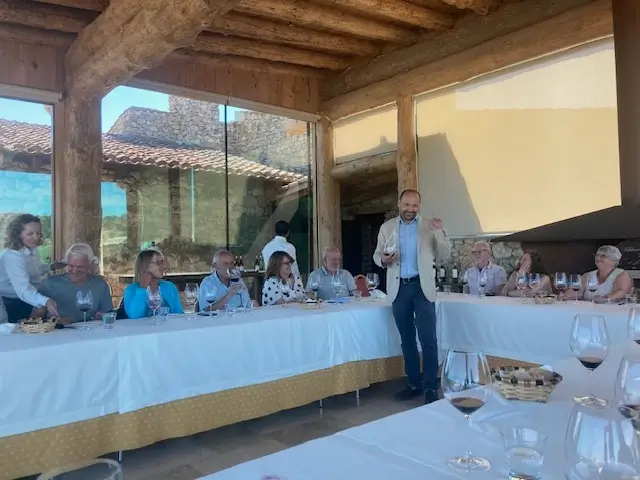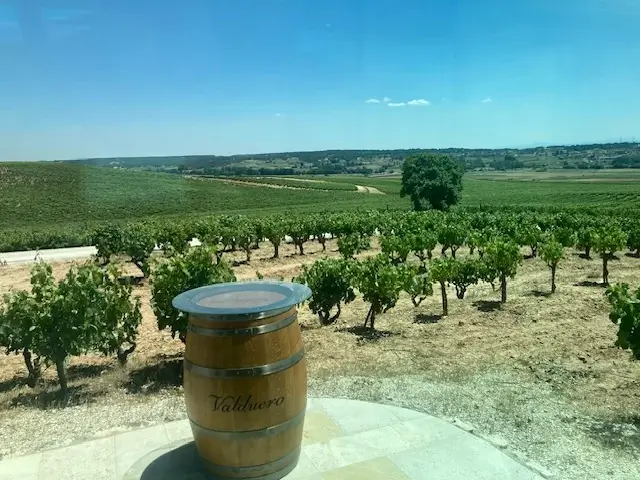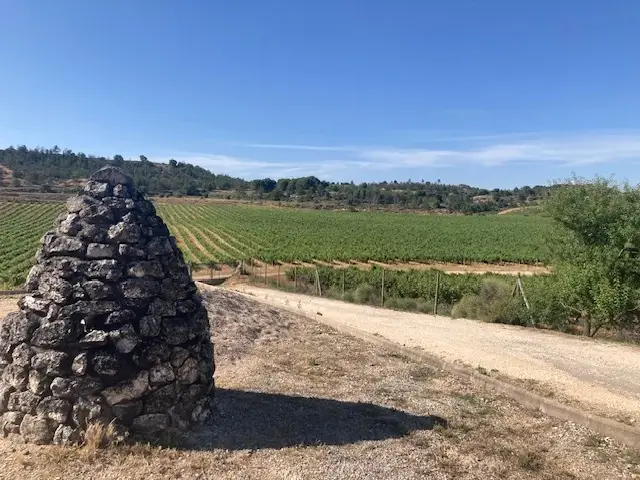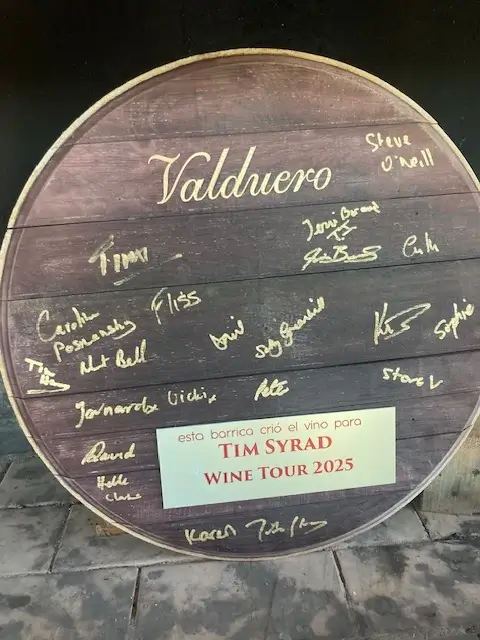Our day in Ribera del Duero started on the coach, driving east beside the Duero River from Valladolid to the Peñafiel, and then the tiny village of Mélida. En route Tim described the history of this amazing region, now so famous, that 50 years ago was virtually unknown with just Vega de Sicilia (which we drove past) producing wine in any quantity and 10 producers in total. Following stellar Parker Points in the 1970s for Pesquera (Mr Parker hailed Pesquera the Pétrus of Spain in 1982), investment flowed in and there are now 320 producers and considerably more area under vine. The DO was awarded in 1982.
Tim had arranged two wonderfully contrasting visits, the first of which was to Mélida. Established 10 years ago by two oenologist sisters and their father, they are probably the smallest producer in the region. They built their winery in their home village, but went further afield for their grapes – we learnt that the highest areas of Ribera del Duero are 60km north, in the region of Burgos, and it is the cooling influence of altitude, particularly at night, that allows grapes to ripen more slowly and develop the quality of flavour to produce great wine. While they don’t own vineyards they effectively ‘rent’ vineyards and manage them. Small growers who previously sold to co-ops no longer have the manpower to do this as sadly few young people stay in this remote place. Harvest sounds fun, with 30 or so friends and family assisting to pick by hand, sort in the vineyard, and bring small batches back to the winery for vinification.
All this was explained to us by Fernando, who is Argentinian, married to Miriam, one of the sisters, and was waiting for the results of his second year MW exams! As you can imagine he was incredibly knowledgeable, but very good at bringing the region and his family’s business to life. In the intense sunshine with blue skies it was hard to imagine the sub zero temperatures of the winter nights, the frosts that can form as late as June, the hailstones (that fell last week, and destroyed all the new growth in one of their vineyards).
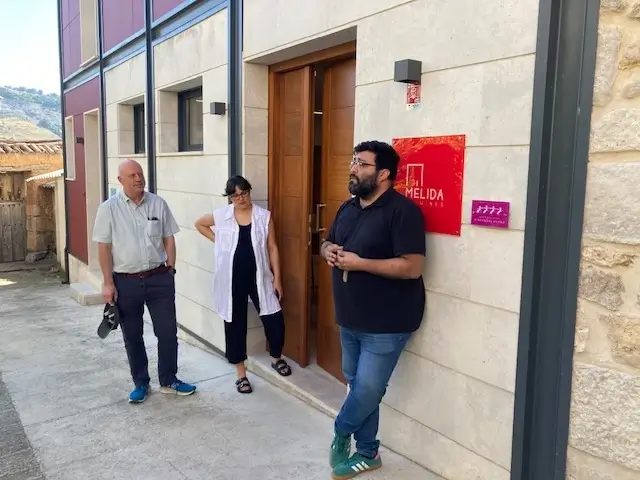
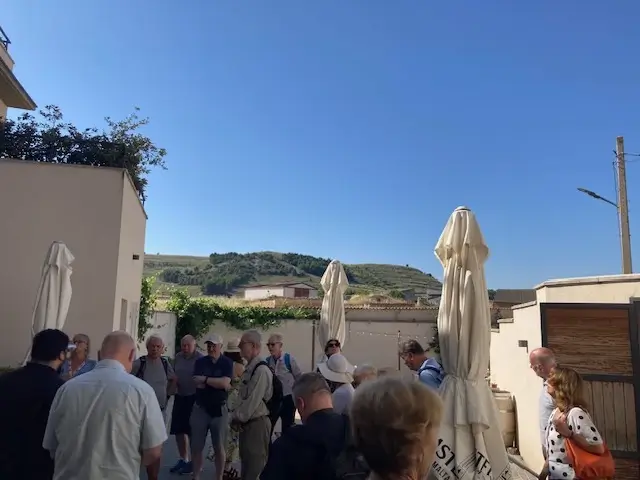
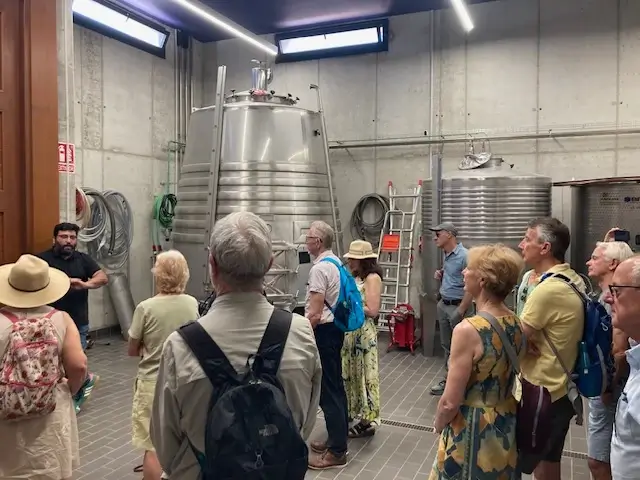
We entered the winery, seeing the tanks and barrels in which they ferment the grapes (the barrels set on wheels that allow them to be gently rocked to keep the must moving during fermentation), and then had a tasting of two wines from barrel, one from a plot of vines just 20 years old, the other from vines planted in 1923, both from last year’s harvest and with a few more months to go in barrel.
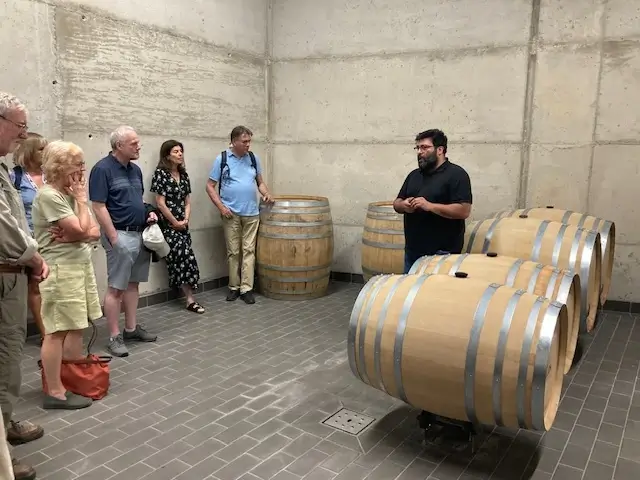
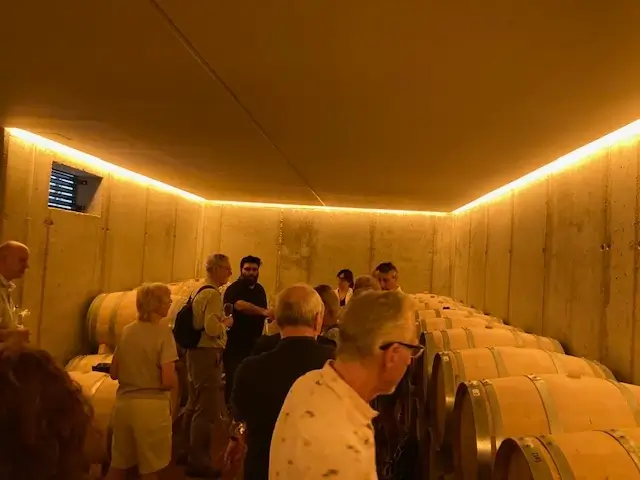
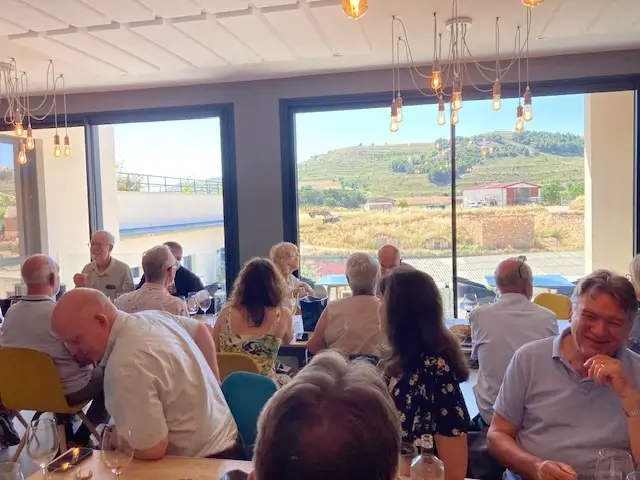
Mélida make wines with a focus on fruit expression and freshness, so they have no new barrels and they are careful to monitor evolution and bottle before too much oak takes over. Both from barrel and the four we had in the tasting room gave us a real sense of this – beautiful wines with great acidity and freshness but beautiful flavours.
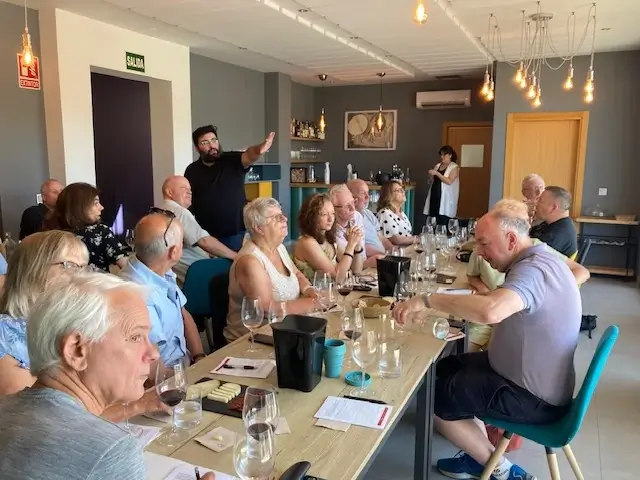
We could have stayed the whole day, listening to their story which is not just about wine but also about regenerating a region that is still very poor (touchingly, Miriam and Fernando’s first child was the first baby to be born in their village for 45 years), but we had another visit to make.
Half an hour or so north, into the Burgos region, took us to Valduero which Tim has been visiting since 2012. In common with Mélida, this was set up in 1984 by two sisters and their father. Yolanda Garcia Viadero, who leads on winemaking has an agricultural engineering degree (and a masters in oenology), and this showed in the design of their winery, which was magnificent (and on a completely different scale to Mélida).
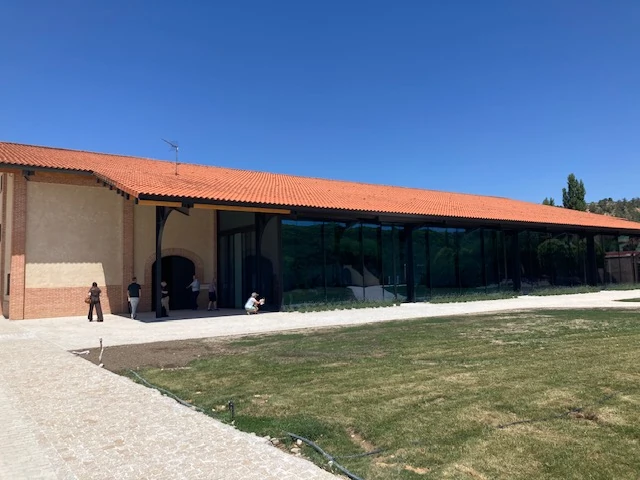
We met Alfonso, their export director and a good mate of Tim’s, in the atrium, and with his assistance discoved out that the jazzily painted fermentation tanks we had been admiring as art were actually loos! Valduero has a great focus on art, Carolina, the second sister has a degree in art history (and an MBA), and we were to find much to enjoy visually during our visit.
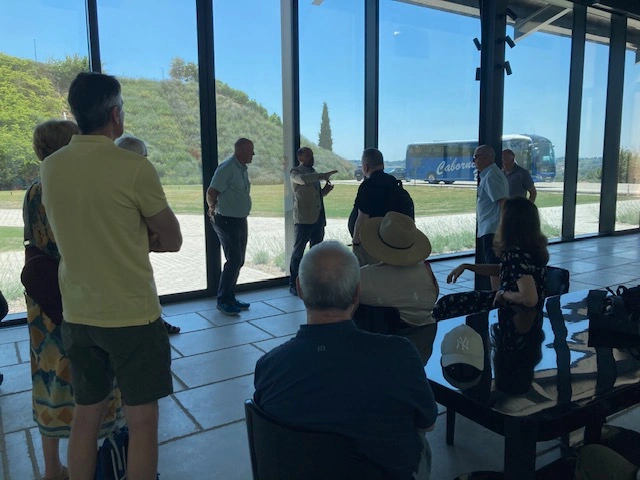
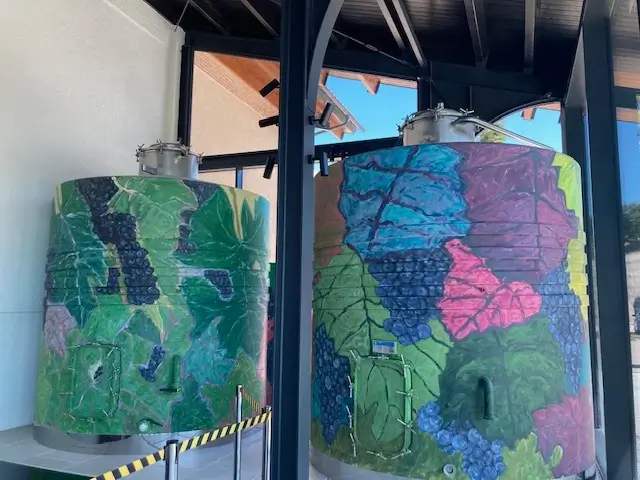
This commenced with a look at the vineyard beside the winery, with its bush vines neatly planted in rows, with verdant foliage. We then entered the huge mound that extended from the hillside, into the first of three parallel ‘hangars’ that are reinforced by concrete and covered by earth (and vines). This allows perfect temperatures without any artificial cooling, and also capacity to make the 400,000 bottles they produce each year, and store their wine, whether in barrel or bottle for at least 5 years before release. In the first ‘hangar’ we saw the tanks into which grapes enter the winery (through hatches in the roof). These are on a gantry overhead, enabling gravity to do the work of moving the must and wine around, and are small in size, allowing microvinification of individual plots.
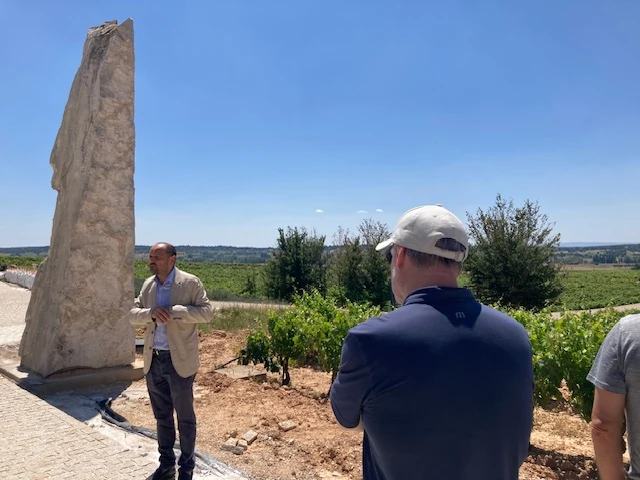
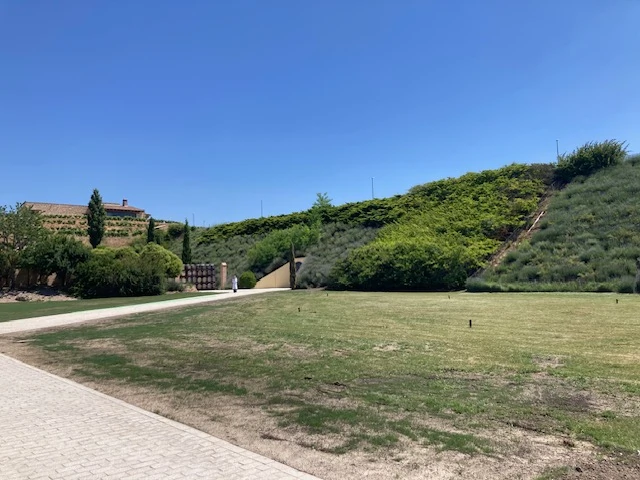
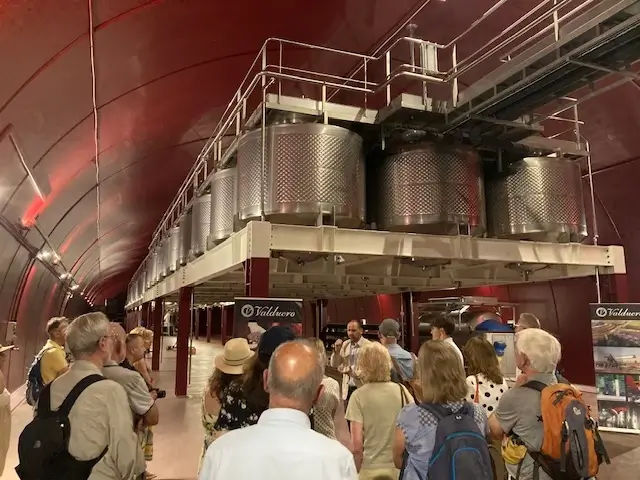
The middle hangar contained what can only be described as mountains of barrels. Alfonso described the different types of oak and toasting they employ, and encouraged us to enjoy the aromas of the gently maturing wines. The final hanger was the bottle cellar, the racks made from wood, each labelled by hand by Yolanda herself.
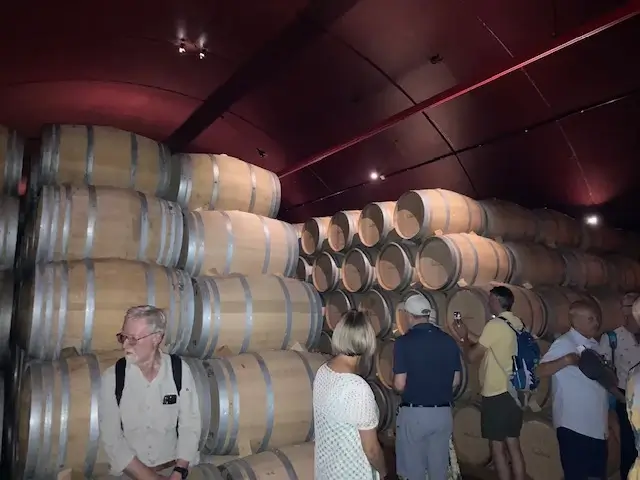
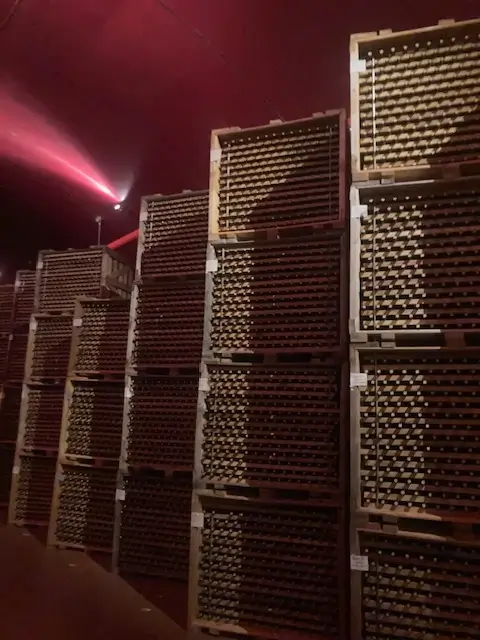
At the end of the bottle cellar, heading towards the hillside, was something we weren’t expecting: Valduero run a competition with top young art students to make a piece of art from a barrel, and recent winners were displayed. Exploring their creativity and ingeneuity would have been a visit in itself, but we had another adventure.
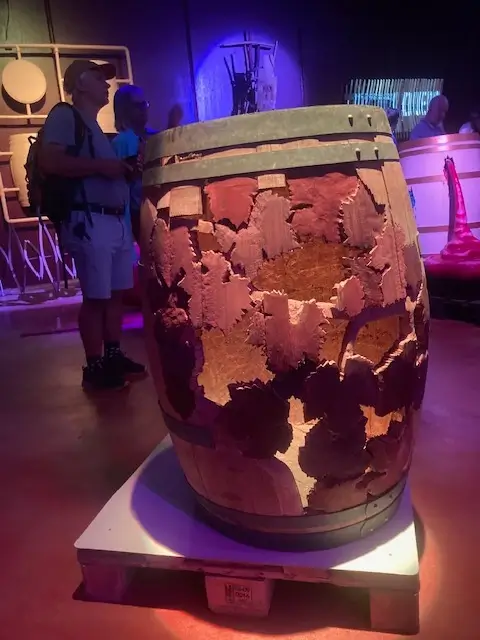
Moving into the original cellars dug into the hillside we passed more barrels and a display of barrel lids that were labelled and signed by happy groups of people who had ‘bought a barrel’. Among them a number from previous groups that Tim has brought to Valduero (including one from 2013, when the first group to visit returned to collect their spoils!).
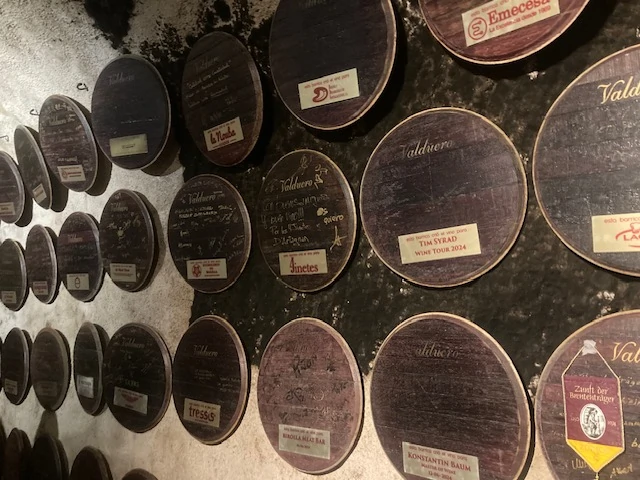
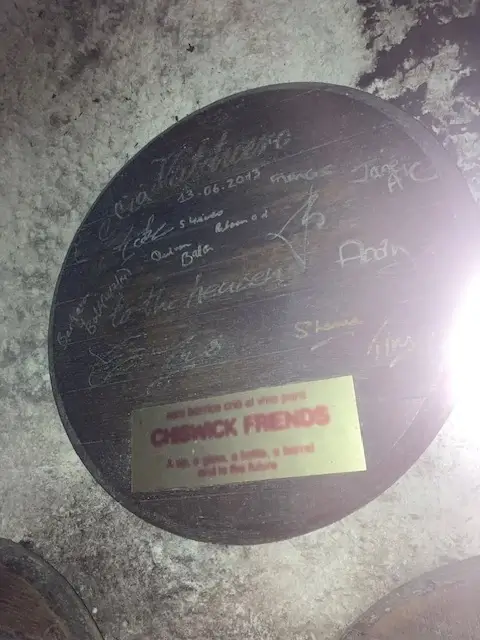
We had a very jolly signing ceremony of our barrel lid, and so became Membresía la Tendada (members of the barrel owners club). We learnt that in the autumn when the wine is bottled we would be receiving our share. We were in good company, among the previous barrel owners were stars of music, film and sport, and some very well known authors!
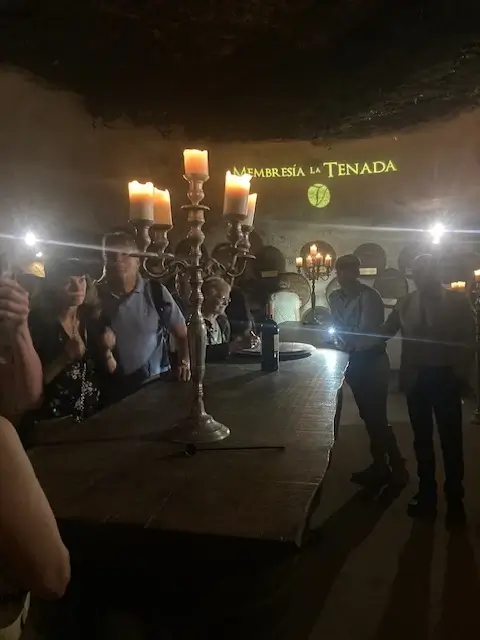
We ascended through a passage lined with barrel staves, each attributed to a restaurant that stocks Valduero wines, and Tim claimed a 5 litre bottle of yet to be revealed wine that we would enjoy at lunch.
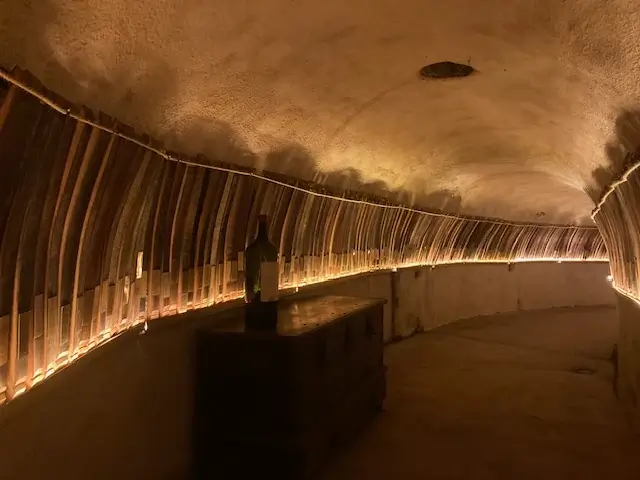
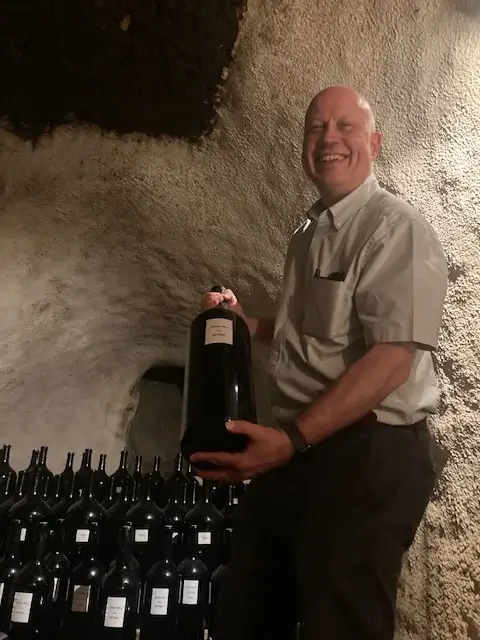
Which was of course wonderful, taken in a room with panoramic views of their vineyards and interspersed with a tasting of their range of wines, starting with a lovely fresh white wine made from Albillo (a grape variety Yolanda brought back to life 30 years ago), and culminating in their ‘6 Años’, which as the name implies is matured for 3 years in oak and 3 years in bottle before release.
Our ‘mystery wine’ was their top of the range Una Cepa (such low yields that a single bottle is made from the equivalent of grapes from a single vine), we tasted the current 2020 vintage first and then the 2017 from the big bottle – a great demonstration of how these wines can be delicious drunk at release and with some bottle age.
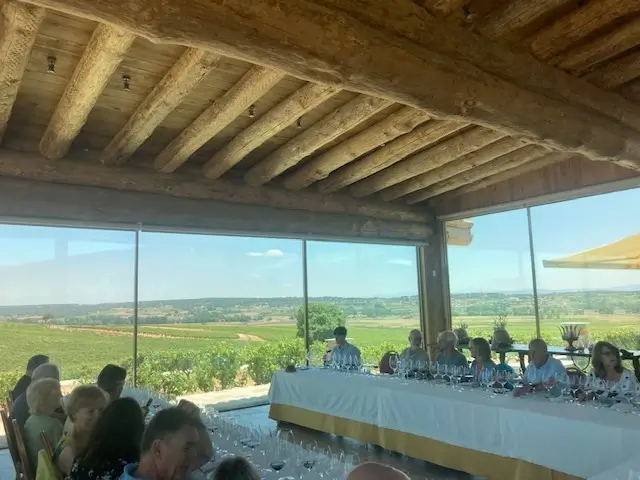
I could write so much more about both our visits, the beauty of the scenery, the quality of the wines, the lovely food we ate at both. But I think the most important memories we will take away were of the amazing people we met, how much we admired their determination and creativity and how much we appreciated their generosity. Our lunch concluded with a rendition of ‘Happy Birthday to you’ – Alfonso rather reluctantly admitted it was indeed his birthday. We were so glad he shared it with us!
